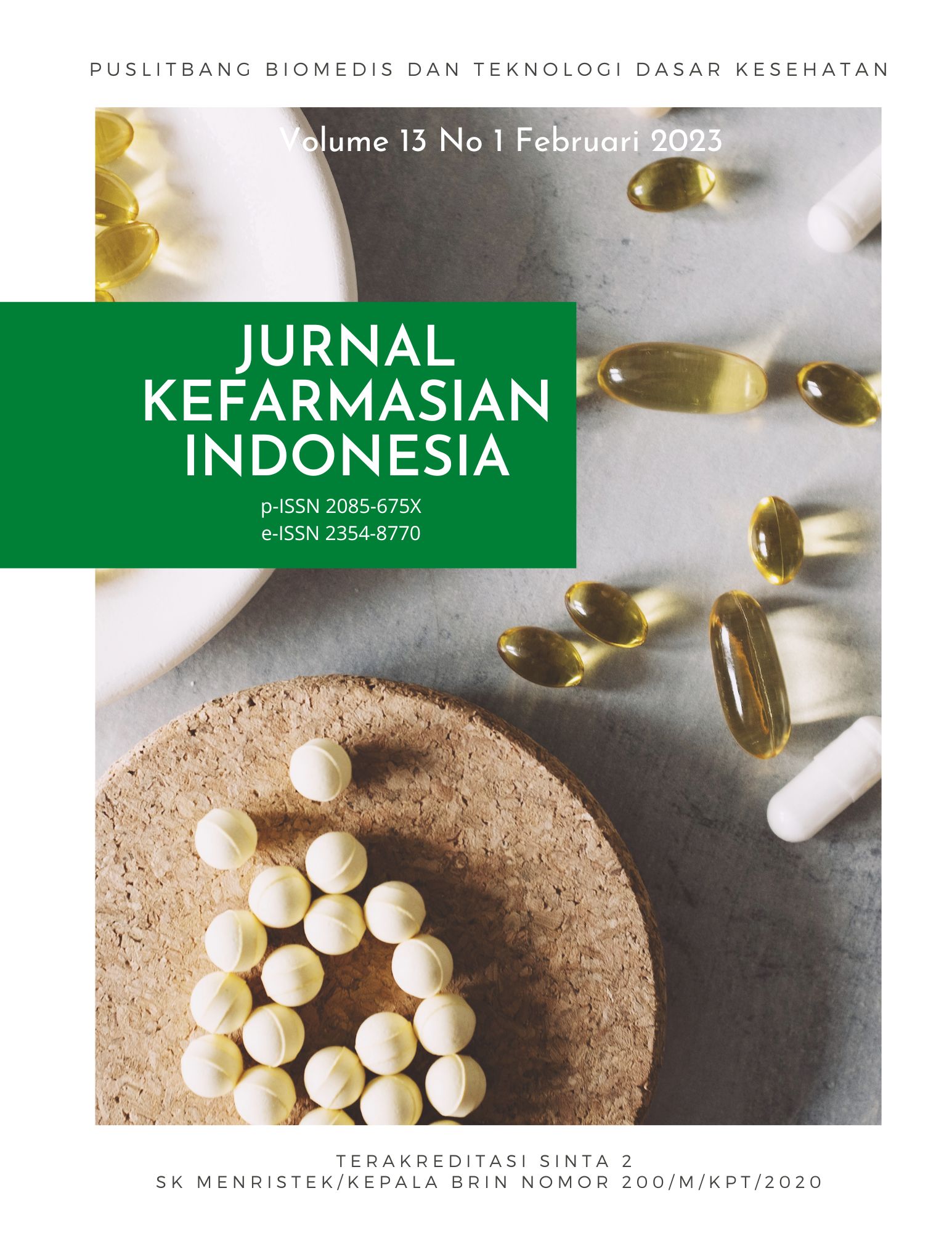Evaluasi Pola dan Rasionalitas Penggunaan Antibiotik pada Pasien Neonatus di Ruang NICU dan Perinatal RSUD Banjarnegara
Abstract
Neonates are particularly susceptible to infections caused by exposure to microorganisms during labor or shortly after birth. Some neonates require treatment in the NICU and perinatal rooms because of cases of infection that require antibiotics as therapy. This study aimed to determine the pattern of antimicrobial administration, antimicrobial rationality, and its relationship to clinical outcomes. This study used a cross-sectional design with prospective data collection using the medical record of neonates in the NICU and Perinatal rooms at RSUD Banjarnegara during November 2020-January 2021. The samples in this study were all neonatal patients who received antibiotics. Evaluation of antibiotics use was carried out using the Gyssens method. Descriptive analysis was conducted to determine the description of the research sample and the antibiotics used. A total of 131 samples had normal birth weight characteristics of 71%. The single antibiotic most frequently used as amoxicillin (21 patients), and the combination antibiotic was ampicillin+gentamicin (106 patients). The results of the evaluation using the Gyssens method showed that patients received 265 antibiotics, 85.55% were in category 0, 8.75% in category IIa, 3.8% in category IIIb, and 1.9% in category IIb. Of the 131 neonates treated, 124 patients were declared improved and 7 others died. The correlation between antibiotic rationality and clinical outcomes was analyzed by Chi-square, the result of the Asymp value. Sig (2-sided) 0.138 which means there is no relationship between the two. The rationality and effectiveness of clinical outcomes of antibiotics used during the study were considered good because the number of patients who were discharged with improved conditions was much greater than those who died.References
Kementerian Kesehatan Republik Indonesia. Profil kesehatan indonesia tahun 2020. Jakarta; 2021.
Kementerian Kesehatan Republik Indonesia. Profil kesehatan indonesia tahun 2019. Jakarta; 2020.
World Health Statistics 2019: Monitoring health for the SDGs (sustainable development goals). Geneva: World Health Organization; 2019.
Desalew A, Sintayehu Y, Teferi N, Amare F, Geda B, Worku T, et.al. Cause and predictors of neonatal mortality among neonates admitted to neonatal intensive care units of public hospitals in eastern ethiopia: a facility-based prospective follow-up study. BMC Pediatrics. Desember 2020;20(1):160-170.
Williams PCM, Isaacs D, Berkley JA. Antimicrobial resistance among children in sub-saharan africa. Journal Lancet of Infectious Disease. 2018;18(2):33-44.
Hidayat F, Setiadi AP, Setiawan E. Kajian penggunaan antibiotik pada neonatus intensive care unit di sebuah rumah sakit pemerintah di surabaya. Indones J Clin Pharm. 2019;8(1):58-71.
Patminingsih N, Ratih Laksmitawati D, Utami Ramadaniati H. Evaluasi penggunaan antibiotika pada pengobatan sepsis neonatal dengan metoda gyssens di rsad salak bogor tahun 2018. Syntax Lit J Ilm Indones. 20 Juli 2020;5(7):381-97.
Indonesia. Kementerian Kesehatan Republik Indonesia. Instrumen survei standar nasional akreditasi rumah sakit Edisi 1, Jakarta: Menteri Kesehatan; 2018.
Kementerian Kesehatan Republik Indonesia. Peraturan menteri kesehatan ri no. 28 tahun 2021 tentang pedoman penggunaan antibiotik. Jakarta; 2021.
Dirga, Khairunnisa SM, Akhmad AD. Evaluasi penggunaan antibiotik pada pasien rawat inap di bangsal penyakit dalam rsud dr h abdul moeloek provinsi lampung. Jurnal Kefarmasian Indonesia. 2021:11(1) 65-75.
Ikatan Dokter Anak Indonesia. Formularium spesialistik ilmu kesehatan anak. Jakarta; 2013.
American Pharmacists Association (APhA)Drug Information Handbook 27th edition, Ohio, Lexicomp; 2018.
Hayatullah MK, Tjipta GD, Sianturi P, Azlin E, Lubis BM, Syamsidah, et.al. Terapi Antibiotika Empiris pada Neonatus. The Journal of Medical School, Majalah Kedokteran Nusantara. 2017; 50(2):107-10.
Liljedahl Prytz K, Prag M, Fredlund H, Magnuson A, Sundqvist M, Ka¨llman J. Antibiotic treatment with one single dose of gentamicin at admittance in addition to a β-lactam antibiotic in the treatment of community-acquired bloodstream infection with sepsis. PLoS ONE. 2020 15(7):1-15.
Copyright (c) 2023 Jurnal Kefarmasian Indonesia

This work is licensed under a Creative Commons Attribution-NonCommercial-ShareAlike 4.0 International License.














